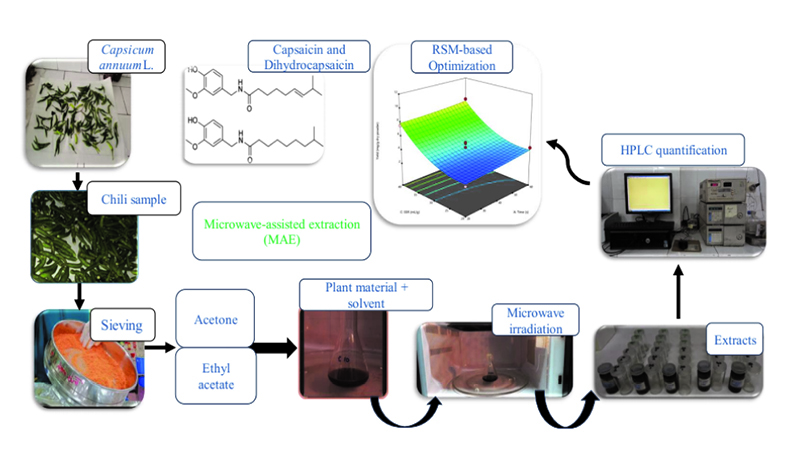Microwave-Assisted Extraction of Capsaicin and Dihydrocapsaicin from Green Chili with Process Optimization as per Response Surface Methodology
DOI:
https://doi.org/10.17344/acsi.2024.8960Abstract
Capsaicin and dihydrocapsaicin are highly valuable natural compounds. In this study, microwave-assisted extraction (MAE) was optimized for the extraction of these compounds from Capsicum annuum L. using two solvents: ethyl acetate and acetone. The optimization was conducted using response surface methodology (RSM), and high-performance liquid chromatography (HPLC) was used for quantification of the compounds. The independent variables considered were microwave power (W), irradiation time (s), and solvent-to-solid ratio (SSR). For MAE-acetone, the optimal yields were 19.3 mg/g dry matter (DM) for capsaicin and 10.2 mg/g DM for dihydrocapsaicin. MAE-ethyl acetate yielded higher amounts, with 22.1 mg/g DM for capsaicin and 10.6 mg/g DM for dihydrocapsaicin. The optimal conditions for capsaicin in both solvents were 60 s, 220 W, and 30 mL/g SSR, while for dihydrocapsaicin, the conditions were 40 s, 220 W, and 40 mL/g SSR. Thus, MAE-ethyl acetate proved to be more effective than MAE-acetone for the extraction of both compounds. It is, therefore, preferable due to its efficiency and environmental safety and, thus, is a promising technique for industrial applications.

Downloads
Published
Issue
Section
License
Copyright (c) 2025 Nimra Maqsood, Dildar Ahmed

This work is licensed under a Creative Commons Attribution 4.0 International License.
Except where otherwise noted, articles in this journal are published under the Creative Commons Attribution 4.0 International License
